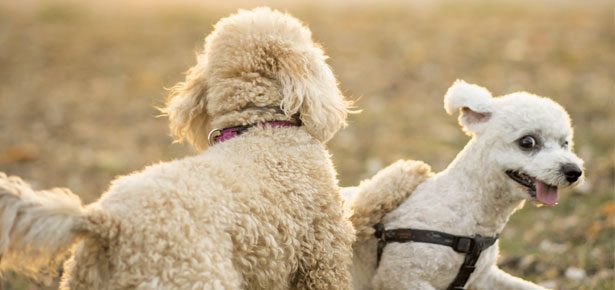

How to Choose a Dog Trainer
How to find the right trainer for your dog
Choosing a good dog trainer is much like finding the right teacher for your child. Assertive but caring, attentive and knowledgeable—there are many important qualities to keep an eye out for when making this crucial decision. In order to choose one wisely, it is advised that dog owners call, interview, and observe a trainer prior to hiring them.
“There are numerous ways to train dogs. In addition, each animal has his/her own learning style and preferred motivators,” said Dr. Bonnie Beaver, professor at the Texas A&M College of Veterinary Medicine & Biomedical Sciences. “The American Veterinary Society of Animal Behavior, or AVSAB, endorses training methods that allow animals to work for things (such as food, play, affection) that motivate them, rather than techniques that focus on using fear or pain to punish them for undesirable behaviors.”
A good rule of thumb is to avoid any trainer who displays methods of physical force that may harm your dog, including ones who routinely use choke collars, shock collars, or any other physical punishment as a primary training method. Look for a trainer who uses reward-based training with treats, toys, and play instead.
“Research shows that dogs do not need to be physically punished to learn how to behave, and there are significant risks associated with using punishment, such as inhibiting learning, increasing fear, and/or stimulating aggressive events,” said Dr. Beaver. “Because of its risks, punishment should only be used by a trainer who can fully explain the possible adverse effects and instruct owners in one-on-one sessions how to perform the techniques correctly.”
Observing a class prior to hiring the trainer is a great way to get an accurate representation of their training methods and abilities. You should evaluate not only if the attending dogs seem to be learning and enjoying the class, but if their owners are as well.
Are dogs’ tails up and wagging or down and/or tucked? Are the people talking with their dogs in happy, upbeat voices or are they scolding or even yelling at them? Talk to the current students—are they enjoying the class and feel that their dogs are learning? Dr. Beaver explains that asking these questions will help to evaluate the trainer and see if their teachings style will work with how you and Fido learn.
“Ultimately, you should feel comfortable doing whatever it is the trainer asks you to do to your dog,” said Dr. Beaver. “If your trainer ever tells you to do something to your dog that you believe will cause you or your dog undue harm or distress, ask them to explain why they recommend that technique, what the potential drawbacks of the technique are, and how these will be addressed should they occur.”
It is important to keep in mind that all dogs are different, and due to the variable and unpredicted nature of behavior, a conscientious trainer cannot guarantee the results of training. They should, however, be willing to ensure satisfaction of their services. Remember that training should not only be a pleasant and comfortable experience for Fido, but for you as well.
Join the newsletter and never miss out on dog content again!
"*" indicates required fields
By clicking the arrow, you agree to our web Terms of Use and Privacy & Cookie Policy. Easy unsubscribe links are provided in every email.





